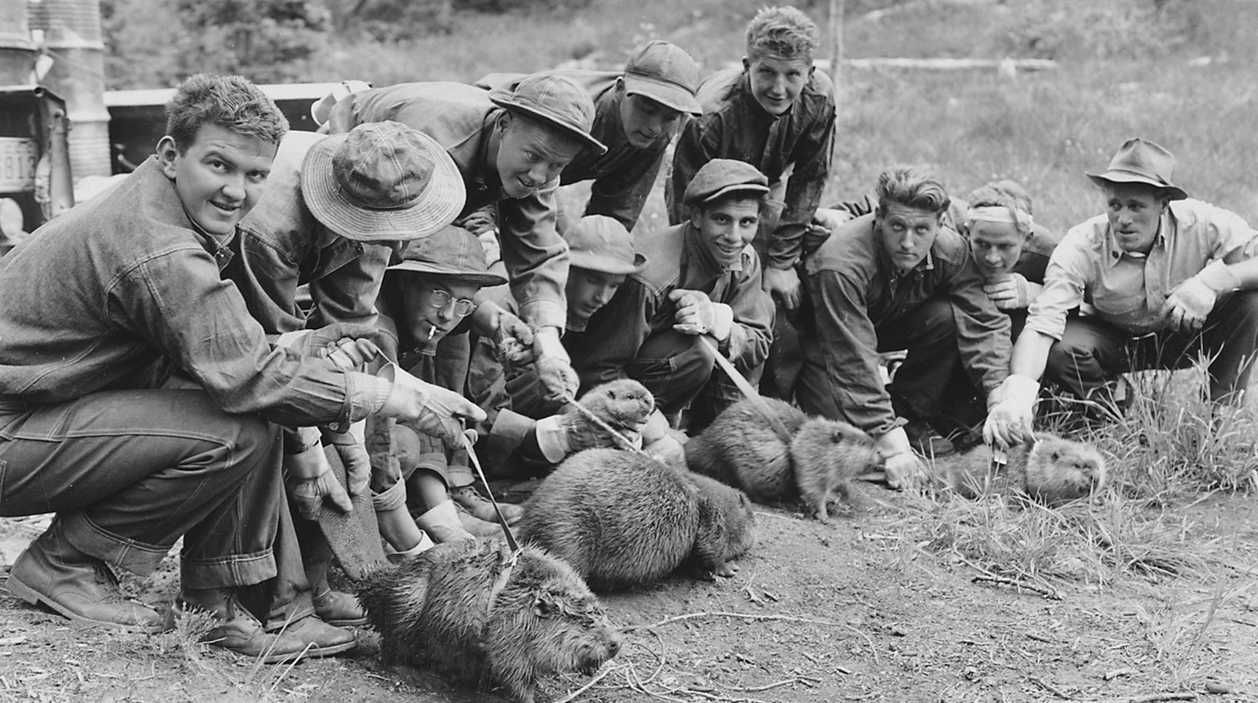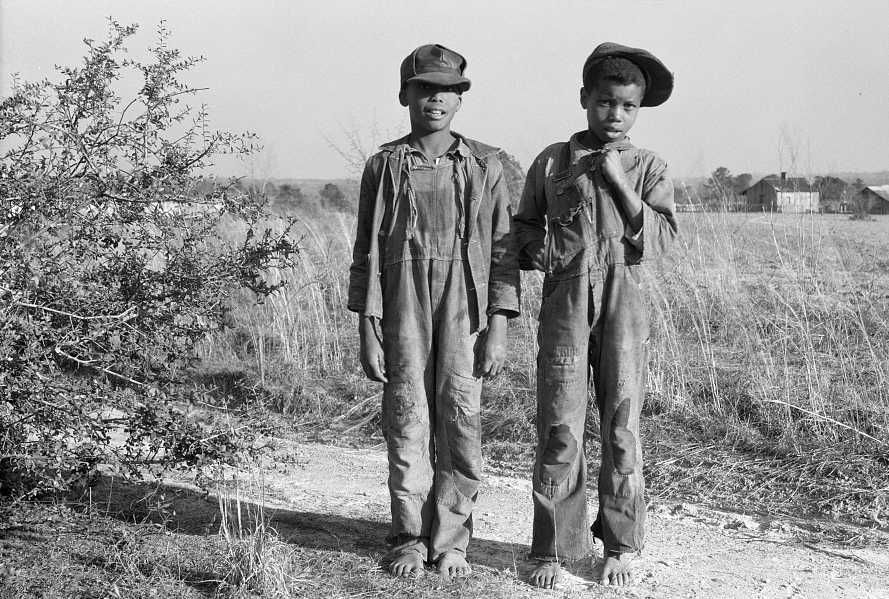
by Errol Lincoln Uys
In 1929, James San Jule's father was a successful businessman in Tulsa, Oklahoma. San Jule graduated from Tulsa Central High School and had been accepted at Amherst college in Massachusetts, planning to go on to Harvard Law School. Because of his youth, his father wanted him to wait a year and arranged for him to work as an office boy in the Exchange National Bank at Tulsa.
"I didn't think much of money in those days. It was just something we had," said San Jule. "My father was probably a millionaire. We owned fancy cars, a fancy house, fancy everything. I led the ordinary life of a wealthy kid, nothing spectacular." He was working in the bank in October 1929, when the debacle began.
"Of course, you didn't believe it. 'This is something that happens,' you thought. 'It will pass.' "
The Crash of 1929 wiped out San Jule's father financially and physically.
"It was a horrible, horrible period, about which I understood little. What's a kid to do? You have no worries about anything. You're going to Amherst and Harvard. All of sudden your life is blasted out of existence. It felt like being de-princed."
In the winter of 1930, San Jule ran away from home, not quite sure where he was going or even why he was leaving. It just seemed the thing to do.
Between 1929 and 1941, 4,000,000 Americans desperate for food and lodging roamed the land. Of this number, 250,000 were teenagers who rode the rails and grew up fast in speeding boxcars, living in hobo jungles, begging on the streets and running from the police and club-wielding railroad police.
[Header photo: Ozark children - John Vachon - FSA/Library of Congress]
Arvel "Sunshine" Pearson began work as a waterboy in an Arkansas strip mine at the age of nine.Great Depression Hoboes By 1929, he had already been working underground for 18 months, when the mine closed. He was 16 when he first rode the rails in 1930 and would continue to hop freights until 1942 as a migrant farm worker in summer and working in coal mines in winter.
"I thought the Depression was going to go on forever. For six or seven years, it didn't look as though things were getting better. The people in Washington DC said they were, but ask the man on the road? He was hungry and his clothes were ragged and he didn't have a job. He didn't think things were picking up.
" 'I'm going to keep going,' I said. 'Someday I will be able to face people I used to beg for food.' If I didn't have hope I would have starved to death by the time I was 17," said Pearson.
Clarence Lee was born in Baton Rouge, Louisiana in July 1913, the son of a sharecropper. When Lee was 16, his father could no longer support him. "Go fend for yourself," he told Lee.
For 18 months, Lee hoboed throughout Louisiana riding freight trains up and down the state in what was essentially a search for food to save him from starving. In 1931, he found work on a dairy farm at a wage of 10 cents an hour. With his earnings he was eventually able to buy his parents out of sharecropping servitude for an amount he remembers precisely: $111.40.
"When I was riding the freight trains I didn't feel like an American citizen," said Lee. "I felt like an outcast. I was nothing but dirt as far as whites were concerned. If you asked for something to eat, some would give you a piece of bread at the back door and tell you to get off the premises. Some would sic the dogs on you. It was hurtful to be treated like that. I felt very, very down."

"It was a terrible way to live. It was rough and dangerous but there was also a mystical quality," recalled Don Snyder of Toledo, Ohio, who rode the rails for three years from 1933 when he was 15. "The sound and moan of a whistle in the silent darkness echoing through the hills. The smell of the cars and the clicking of the rails. The ding, ding, ding at the crossings. The excitement of avoiding the bulls and brakies. The open prairies, the mountains and the clear skies above you. For all the hardships you feel a faint longing to hit the road again."
Grinding poverty and shattered family relations were the reasons most kids left home. Other factors, too, drove them onto the road. In 1934, schools had 25,000 fewer teachers than in 1930, with a million more pupils. Terms had been shortened in one out of every four American cities, and five thousand schools had closed altogether. By 1935, of ten million youths of high school age, four million were out of school.
"I have moments of real terror, when I think we may be losing this generation," said First Lady Eleanor Roosevelt, who made the youth problem a personal crusade.
How many girls rode with the army of boys on the loose was difficult to determine because the majority traveled in disguise for their safety. One estimate put the number of transient females at one in ten or 25,000.
Some traveled with young children, as happened with Harold Kolima's mother, who had three boys, ages five, seven and nine when she rode the rails. Harold, the youngest, recalled a haunting scene: "My mom, three little boys, with bed rolls and a large suitcase, and a puppy dog tagging along, walking through the railyards at Omaha, Nebraska. Looking for a freight headed west."
For four years, the family lived a "Grapes of Wrath" existence in hobo jungles and harvest camps, taking boxcars from Nebraska to follow the harvests in California.
Following the harvests provided backbreaking work at starvation wages, and sometimes no wages at all. For three weeks in 1934, Burton Williams, 16, and his brother, Vic, 14, picked cotton for a grower in Elk City, Oklahoma.
"When we told the farmer we were quitting and going home, Burton said, 'You have 35 cents each coming.' That's all we got for three weeks' work."
The Civilian Conservation Corps ( CCC ) set up by the Roosevelt government in summer 1933 gave refuge to thousands of boxcar boys in 1,500 forest camps. On a much smaller scale, the National Youth Administration established 50 training camps for girls.
"I begged for dimes on the streets of the French Quarter in New Orleans," said James San Jule, who became a union organizer. in San Francisco. In 1937, he co-authored a pamphlet with John Steinbeck on the plight of migrant workers in California. "I was angry half the time and when I wasn't angry I was sad. Why was this happening to me?
" It was more than a lack of understanding. It was an aimless, discombobulated feeling, as though the world had disappeared. The same feeling you have during an earthquake that's beyond your control.
"You were searching for something and didn't even know what the hell you were looking for. The thought that something was wrong must've crossed my mind but those days I didn't think of it in political terms. I spent so goddamn much time just staying alive."
The era of the boxcar boys and girls passed with the coming of World War II and the end of the Great Depression.
Riding the rails was a rite of passage for a generation of young people and profoundly shaped the rest of their lives. Self-reliance, compassion, frugality, a love of freedom and country are at the heart of the lessons they learned. Their memories are a mixture of nostalgia and pain; their late musings still tinged with the fear of going broke again.
At journey's end, the resiliency of these survivors is a testament to the indomitable strength of the human spirit.
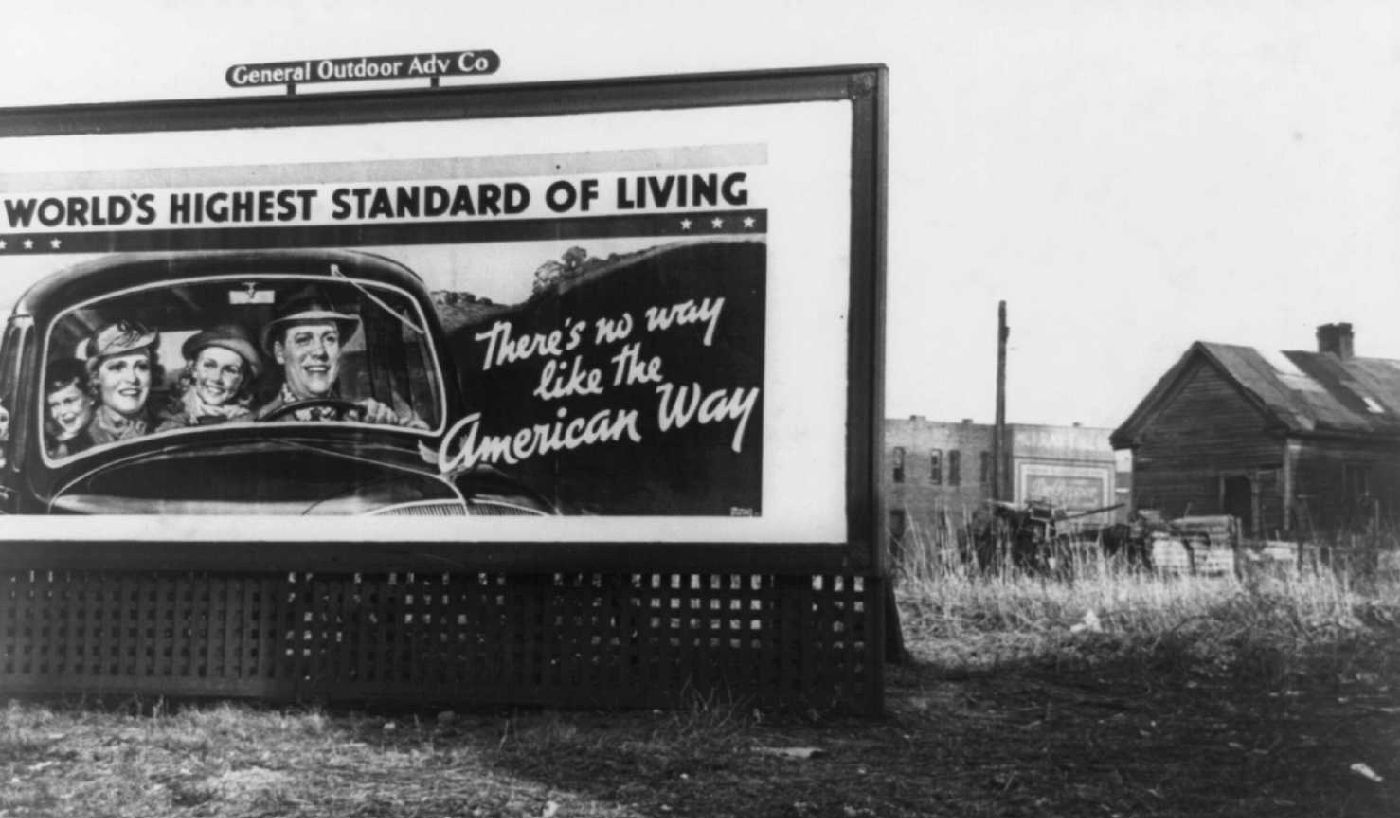
By Errol Lincoln Uys
In October 1929, Oklahoman Edgar Bledsoe believed a newsboy's cry of "Stock Market Collapse" referred to a disaster at an Ardmore cattle auction barn. By 1932, Bledsoe had been riding the rails for two years picking cotton and doing menial work that rarely provided a living for the 18-year-old and two cousins. That summer the trio rode a freight to Comanche, Oklahoma heading back to his cousins' home on a drilled-out oil field. They had to walk the last 13 miles through the woods.
"We ran across a log cabin deep in the blackjack oaks. It had a well in the backyard with a rope and a pulley. A man who must have been close to ninety years came out of the cabin. We asked if we could have a bucket of water," Bledsoe recalled.
"'When did you boys last eat?' the man asked.
"When we told him, he told his wife to bring us food.
"She set out a gallon crock that was half full of milk, a pone of cornbread and a bucket of sorghum molasses. The milk was beginning to turn sour -- 'blinky' we called it -- and the molasses was full of tiny ants. We were hungry beyond being picky and we lit on the food. I still remember we couldn't fault the old lady's cornbread."
At the height of the Great Depression, a quarter of a million teenagers joined the ranks of the army of migratory idle roaming across America riding freight trains or hitchhiking. — In 1933, when the economy hit rock bottom, about 9,000 banks failed, $2.5 billion in deposits was lost, unemployment soared to nearly 13 million or about one in four of the labor force. Not since the civil war had the American nation stared so deeply into the abyss.
Some youths ran from home believing they were burdens on their families; some fled, broken by the shame of unemployment and poverty; others left eager for what seemed to be a great adventure. Romantic ideas of life on the road vanished when a young hobo felt the first pangs of hunger.
The majority of homeowners and shopkeepers were sympathetic toward the hard luck kids. Sixty years later, the simplest acts of kindness were remembered by those who'd been half-starved and utterly dejected when they knocked at a stranger's door. Other kids, too, recalled seeing their mothers and father help hobos who came to ask for food. It was a lesson in giving that was never forgotten.
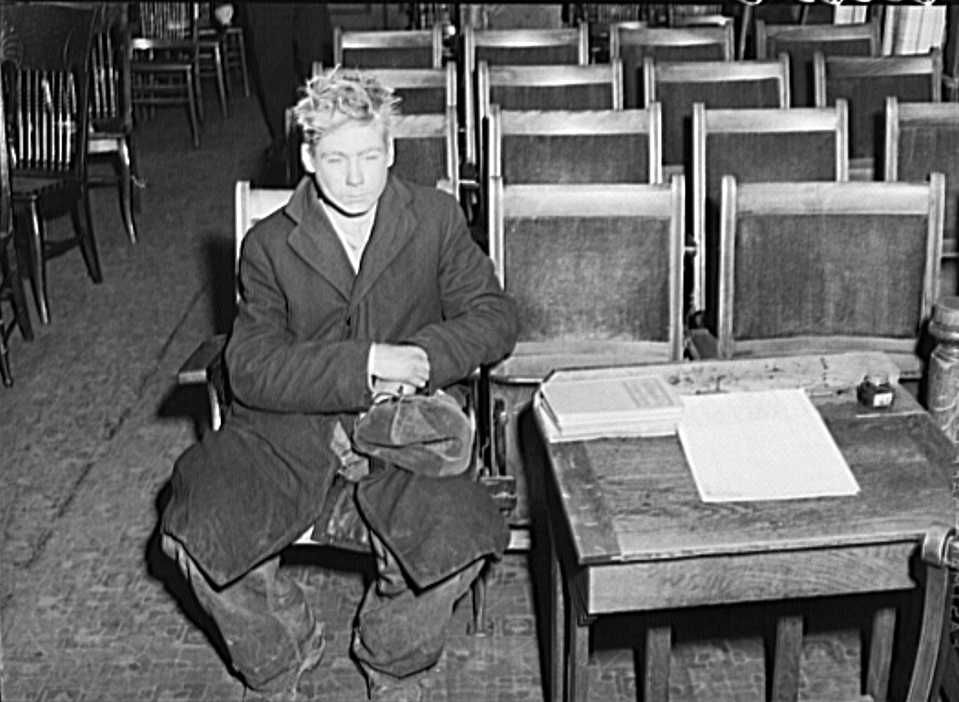
The young hobos never forgot those who reached out to them in their time of need. For their benefactors, too, the ragged bands who knocked at their doors were remembered, especially by the boys and girls of the house. Many were deeply touched by seeing their parents' compassion toward total strangers.
In the 1930s, Albert Tackis's family lived in the small West Virginia town of Colliers, where their house backed onto the Burgettstown Grade. Two-engined freight trains stopped at a water tank behind the house before starting the 30-mile haul to Burgettstown. In summer, Albert would see 60 or 70 hobos climb off the cars to stretch their legs, every train delivering as many as eight hobos who came to the Tackis home to ask for food.
"We were five people in our family: mother, father, grandpap, my sister and me. Grandpap grew all our fruit and vegetables in his garden. In season, mother canned vegetables and made jellies. Every week, she baked 21 loaves of bread.
"When grandpap saw the hobos coming to our house, he alerted mother who would start making egg sandwiches and packing bags with carrots, tomatoes, apples and peaches. Grandpap always had something for the hobos to do. There would be wood to chop, cans to pick bugs and insects in his garden, buckets to fetch water from a spring. The hobos worked for about 20 minutes and then hopped back on the train with a good meal in hand."
At Cottonwood, Idaho, William Loft -- a local dentist's son -- would watch the freight trains pull in with tired hobos riding on the top "sitting with their heads slumped down and looking more like sacks of grain." One day William saw one of the men put a mark on their fence. He ran out and asked why he did this. The hobo explained: "Son, when you're starving and on your last legs, this means there's a hot meal and friendly people you can trust."
The mark on the Loft's fence was one of many hobo signs traditionally used to alert each other to houses where they could get a handout, what approach might work best, and what houses were best avoided.
The one place where the young hobo was assured a welcome was the "jungle," as the hobo camps were called. These were generally not far from the tracks, some nothing more than a clearing for a camp fire, some well-established sites overseen by old jungle buzzards who set up home there.
Between stops at transient camps, Gene Wadsworth dropped into hobo jungles. He found permanent denizens of the camps living in shacks made of flattened tin cans, boards, railroad ties, anything that could be scavenged to build a shelter.
When a freight train rolled by and hobos started arriving, the old buzzard would issue instructions: "Hey, you, Whitey, go up to the meat market and ask for scraps." — "Red, you go get carrots." — "You, skinny, go find spuds."
"I've seen stuff go into a stew pot that I wouldn't feed to a hog," recalled Wadsworth. "We'd take a tin can and the old 'bo would fill it. If he liked your looks, he'd dip down deeper for meat and vegetables; others got mostly soup."
Fredrick Watson knew the Pocatello, Idaho jungle from a different perspective. His father worked in the Union Pacific yards at Pocatello. Watson recalled that the jungle was on the west side of town near the Portneuf River.
"There was always a population of 100 to 150 people, including entire families with kids. They weren't bums but good citizens who were flat out of work and trying to get by."
Watson and his young friends would go to the jungle and eat lunch or dinner with the hobos. "We would take our share, mostly coffee that we purloined from our homes. Mom and Dad probably knew about it but didn't say anything."
Ann Walko was deeply moved by her mother's compassion for the downtrodden who came to their home at Wall, Pennsylvania where freight trains were broken up and re-routed.
"One day a man came to our door asking for food. Mother invited him in but he stood in silence for a moment.
"'I have a family with me,' he said.
"Mother said she would feed them too. He brought his wife and three children. They still refused to come inside so mother spread two rugs on the ground for them. They ate her home-made bread and baked beans and couldn't thank us enough. In a way what a beautiful time it was."

by Errol Lincoln Uys
At the height of the Great Depression, two-hundred and fifty thousand teenage hobos were roaming America, an army of “wild boys” on the loose. Some left home because they were a burden on their families; some fled homes shattered by unemployment and poverty. Some left because it seemed a great adventure.
“As long as you kept moving you were all right, but you were going nowhere,” recalls Jim Mitchell, who ran away from his Kenosha, Wisconsin home in winter 1933, when he was 17. “I remember the morning my Dad came home. 'I lost my job. I'm out of work,' he told mother. It was the first time I saw my father cry. Things went downhill. You lived off your relatives. You went to eat at grandma's and here and there until you hit rock bottom and went on relief. Everything closed in on me. I sat down and told myself, I'd lighten my parents' burden if I took off.“
The quickest and easiest way was to jump a train and go somewhere. We thought it was the magic carpet – the click of the rails – romance,” said Mitchell. Jim and a buddy Peter Lijinski – “Poke” – hopped freight trains across the Midwest. “You went on the road and exchanged one misery for another. You were always filthy and constantly hungry. You'd take whatever odd jobs you could. We did everything from mowing lawns to cleaning grease traps in restaurants. It was humiliating but sometimes you panhandled.
“Nothing was happening and there was no direction in your life. Sometimes you'd meet kids your age in town and start talking with them, I remember once I was cutting a lawn. I started talking to this perfectly nice girl and her mother called her away. Boy, that really hurt. I was as good as her or anyone else.
“I didn't want to live on the road. You had to do something with your life. You couldn't roam around like a damn dog eating out of garbage cans. That's about what you were, a damn dog roaming the road.”
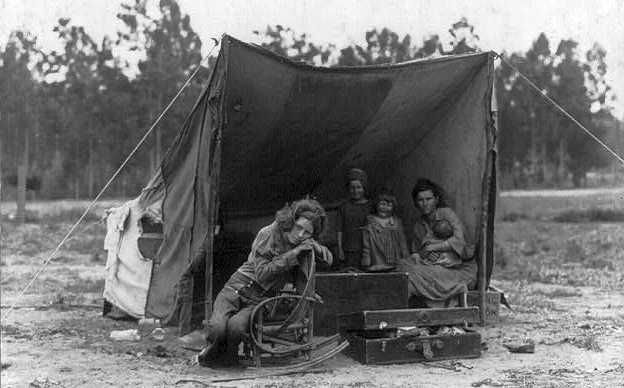
Jim Mitchell and Poke typified the crisis of America's vagabond youth seen as so urgent and volatile by Franklin D. Roosevelt that on March 21, 1933, barely two weeks into his presidency, Roosevelt sent a message to Congress. It stated in part: “I propose to create a Civilian Conservation Corps to be used in simple work, not interfering with normal employment and confining itself to forestry, the prevention of soil erosion, flood control and similar projects. I estimate that 250,000 men can be given temporary employment by early summer.”
Before the close of his first month in office, FDR signed an act creating the Civilian Conservation Corps (CCC), in which unemployed and unmarried men between the ages of l8 and 25 were eligible to enroll. They were to be paid $30 a month, of which $25 was to be sent directly to their needy and dependent families.
The first camp was set up on April 17, 1933 -- just 12 days after the CCC was officially inaugurated. Two hundred CCC enrollees were trucked to “Camp Roosevelt” in the George Washington National Forest near Luray, Virginia to begin work under the supervision of the United States Forestry Service.
At Lake City, Iowa, Mitchell and Poke ran into an army officer. They told him they were on the road and had just got work with a carnival. “That's no life for kids,” he said. “Why don't you join the CCC?”
Mitchell was inducted into Company 2616 stationed at Camp Norwood on the banks of the Wisconsin River, nine miles north of Merrill, Wisconsin.
“We were trucked from a railroad depot to our new home which consisted of a group of long, low buildings covered with tarpaper in a clearing in the pines. Little did we realize that this stark encampment was the haven thousands of boys like ourselves needed.
“There was a wonderful social mixture in the CCC. We lived 40 men to a barrack. Two bunks down there would be a farm kid who couldn’t read or write. If he got a letter from home, somebody read it to him. You could go up a couple more bunks and find a medical student who dropped out of the University of Wisconsin. Another boy’s father had an automobile dealership that went bust. Some kids were literally hoods from the cities.""Thank God, somebody cares about me."
“I found out what discipline was about. Captain Entringer who ran the camp held inspection every morning. Your bunk had to be neat. You had to be able to bounce a quarter off your blanket. Your foot-locker had to be in a precise place. There had to be no dust on your shoes. If you failed inspection, when you got off work that day you would have extra duty. You’d work in the kitchen or chop wood until 10 o’clock.
“On a cold fall day in 1934, they sent our crew to work in a tamarack swamp. Our job was to drag 20-foot long tamarack logs out of the muck and mire of 500-year-old loon dung. The day started with our getting wet to our belt buckles and it never got any better. It was a messy, dirty business. We slogged back to camp that night bone-weary and whipped.
“As we passed the dispensary, Lt. Kuehl, the camp doctor, barked, 'You!' I looked at him and he nodded. 'Yes, you. Come here.'
“The last thing I wanted was a reaming from a shave-tail. I strutted over to him. ‘Yes, Sir,’ I said sullenly.
“He looked me over for a moment and then said in a concerned tone. 'Where are you working, son?' I told him.
“Our crew chief got a tongue-lashing for letting us work on the tamarack detail without hip boots. It was a solid lesson in comradeship and responsibility to your men. I remember thinking to myself, 'Thank God somebody cares about me.'”
By early July, 250,000 young men were settled in 1,468 forest and park camps. They were supervised by 25,000 war veterans and 25,000 experienced woodsmen. In ten years, the CCC took two and a half million men from the ranks of the unemployed and put them to work planting 200,000,000 trees, building dams, fighting forest fires, clearing beaches and campgrounds.
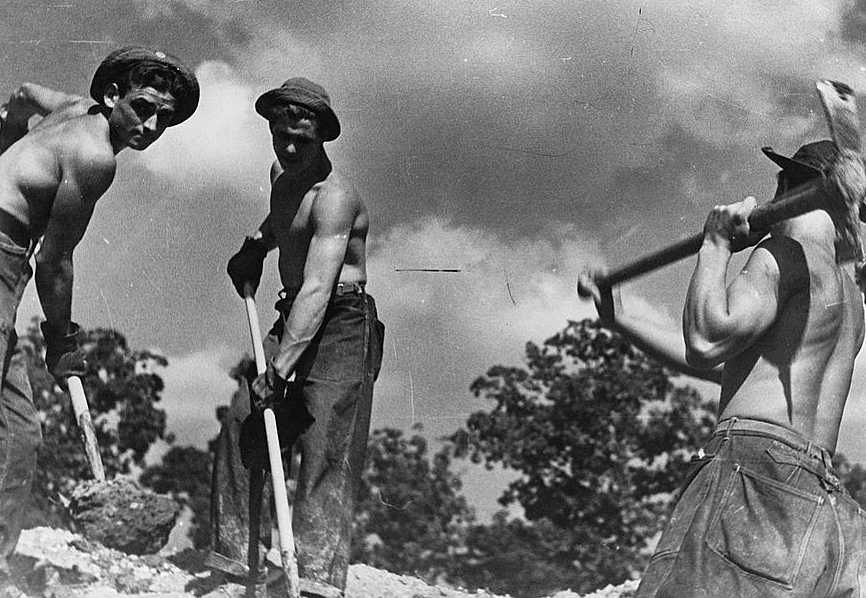
Riding the rails in his early 20s, Texas-born Harry Keller occasionally found low-paying harvest jobs. Most of the time he had no work as he bummed his way around nine Western states. In 1933, Keller signed up for the Civilian Conservation Corps and was sent to a CCC camp in the Tonto Basin near Globe, Arizona.
Nearsighted but without glasses, Keller’s first assignment was as powder man on a dynamiting crew, though he had never worked with explosives before. His job was to fill drilled holes with dynamite and ready it for blasting. He got the hang of it quickly enough or he might have ended his CCC days then and there. Headaches caused by exposure to dynamite later resulted in his being transferred to a less hazardous area.
Re-enlisting in the CCC year after year, Keller strung telephone poles across the Tonto Basin, repaired roads, built fish dams, planted trees and fought forest fires. He eventually became head chef at the camp feeding 175 to 200 young men and youths.
“I’d never cooked in my life. I wrote home to my mother asking her to tell me how to prepare this and that,” recalled Keller. He rose to be Mess Sergeant, a position he held for more than three of his eight years in the CCC.
“I was scared and worried before I joined the corps. The CCC taught me responsibility and gave me confidence. Never again did I worry about how I would survive.”
Arthur Hunevan’s parents were in danger of losing their home when he went into the CCC in Northern California. His wages helped them make the payments on their house. Besides alleviating the financial burden on Wallace Horton’s widowed mother, his year in the CCC taught him to understand and work with other people. “I learned that the world did not owe me a living. If I wanted to get ahead, I would have to earn it, said Horton. The former CCC-er went on to become a U.S.A.F. electronics engineer, whose career earned him the Air Force’s highest civilian award.
Runaway Jan van Heé’s self-esteem was “down to ground zero,” when he enlisted in the CCC. “I felt I was no good, unwanted, rotten, dumb, stupid. No one cared for me and no one ever would,” said Van Heé. After six months in the corps, he was made foreman of a fire-fighting unit with six youths. When the fire season ended, he was promoted to a position in the ranger’s office. “I was getting pats on the back. ‘He’s doing a good job,’ my officers said. I began to feel that I was worth something.”
Franklin Roosevelt’s “Tree Army” marched to many different drumbeats. In a personal memoir, Ernest Amundsen recalled being sent to a “spike” camp at West Yellowstone. “We worked on forest service roads. A dump truck hauled loads of gravel. Left-handed boys had to shovel on the right hand side and right handers on the left side. The boss did this with whatever tools we were using. I learned to use a shovel, ax, saw, pick and other tools left-handed. I also learned not to drink whiskey like you drink beer, and how to play poker and how not to play poker.”
Darwood Drake and other North Dakotan farm boys found themselves posted to a CCC camp at Locke, a small community in the heart of the Ozarks 30 miles from Ft. Smith, Arkansas. “We had to get used to the Southern drawl, the slower way of living, the grits and corn pone. We saw poverty-stricken families in ramshackle places with livestock running in and out of the shacks.” In this unlikely locale, inspired by one of the North Dakotans who could tap dance. Drake joined nine comrades in working up a “routine” for the camp show. “None of us was less than 160 pounds and several weighed over 200 pounds. It was a sight to see 10 uncoordinated men jumping up and down trying to tap to ‘The Sidewalks of New York.”
Not every recruit found a haven in the CCC. Weldon Keele signed up in Utah after graduating from high school in May 1935. He was assigned to a camp in Wood Cross, Utah, where he reported in time for supper. “I didn’t know that you had to put your dishes in one place and your knife, fork and spoon in another place for washing. A big, burly guy from Kentucky who was doing the dishes called me a dumb son-of-a-bitch and wanted to beat me up. I didn’t like the guys from the East. They were too rough-talking for me. I went back to my bunk, gathered up my belongings and headed for home.”
Nineteen-year-old George de Mars had become totally discouraged working on a farm for $25 a month in the summer and $3 a month in winter. In February 1933 he left Minnesota in below zero weather and rode the rails for four months. He was looking for work, but could find only menial jobs and was worse off. “Franklin Roosevelt was my all-time hero when he introduced the CCCs. The corps took a multitude of young men off the road and kept them on the straight and narrow. The pay was not great, but we had good food and clothing and comrades,” said de Mars who served 30 months in the Minnesota CCC. “We were under military discipline. When World War II came, we made good soldiers.”
With 300,000 enrollees a year, the CCC provided a way of leaving the road for thousands of young men in their teens and early twenties. In 1936, Howard Oxley, Director of CCC Camp Education reported that the previous year the corps had found jobs in private industry for 135,000 boys, about one-fourth of the total number in the camps.
With 300,000 enrollees a year, the CCC provided a way of leaving the road for thousands of young men in their teens and early twenties. In 1936, Howard Oxley, Director of CCC Camp Education reported that the previous year the corps had found jobs in private industry for 135,000 boys, about one-fourth of the total number in the camps.To Jim Mitchell, the CCC was to “the poor man’s West Point.”
“We learned everything a West Pointer learned about duty, honor and obligations and got thirty bucks a month in the bargain. The CCC shaped my life which had had no direction. Back home I’d had no role models to measure my life again. In the corps there were well-educated fellows whose goals had been interrupted. I wanted to be like them and knew I had to get an education to do so.
“When I went back to finish high school, I had classmates of 13 who were pulling in A’s while I was struggling to get a C. I didn’t let it bother me because I wanted to get a hold on my life. I wanted to go to college though at the time I didn’t have a prayer. I didn’t let that bother me either. I knew I would get there somehow and I did.”– Jim Mitchell went on to study at Ripon College, Wisconsin. After service in World War II, the GI Bill enabled him to earn a Master’s Degree from the University of Wisconsin. His professional life was spent in producing promotional films for the auto industry.
“The youth of those fateful years were taken from the steamy streets of cities in economic turmoil and from our ravaged farmlands. In the CCC camps we learned values that gave meaning to our lives. On the road you lived for yourself and to hell with everyone else. In the CCC you not only learned to live with other guys, you learned to work as a team. You learned to do a job and do it well. It gave you confidence when you started to become accepted by your peers and to fit in with them.
“You had three square meals a day with good food and a good place to sleep. On the road you spent all your time wondering about whether you were going to eat. If you worked it wasn’t useful work but just for food. To this day I can go and see parks that we built in the CCC. I can see trees that we planted. It’s a living legacy. You didn’t have a living legacy on the road.”
